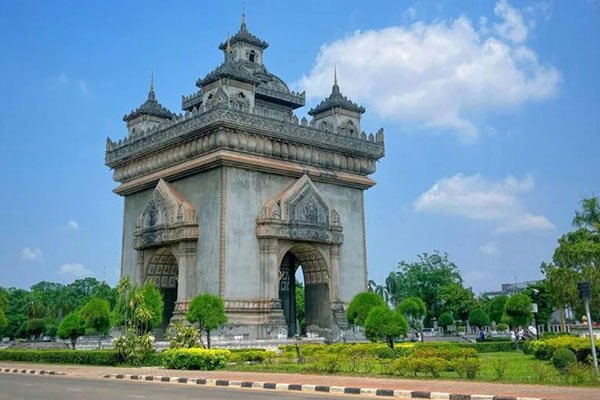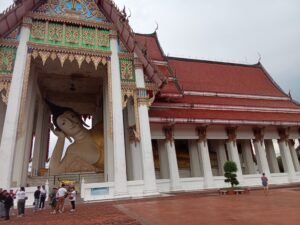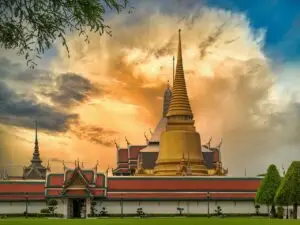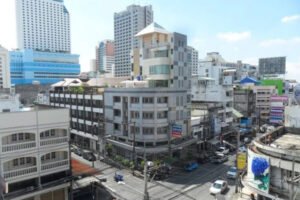Vientiane, the capital of Laos, is a serene and culturally rich city that contrasts with the bustling megacities typical of Southeast Asia. With a population of approximately one million as of 2025, it offers a slower pace of life characterized by tree-lined streets, French colonial architecture, golden Buddhist temples, and a picturesque setting along the Mekong River.
Demographics of Vientiane
- Population: Approximately 1 million (2025 est.)
- Language: Lao is the official language; English and French are also spoken in tourist areas.
- Religion: Predominantly Theravada Buddhism.
- Economy: Tourism, textiles, agriculture, and small-scale manufacturing play key roles.
Vientiane’s charm lies in its blend of youthful energy and traditional Lao culture, providing an authentic and welcoming experience for visitors. Key landmarks include:
Top Sightseeing Spots in Vientiane
1. Pha That Luang
The golden stupa of Pha That Luang is Laos’ most important religious monument. Believed to date back to the 3rd century, it symbolizes both Buddhism and the Lao national identity.
2. Patuxai Victory Monument
Often compared to Paris’ Arc de Triomphe, this monument commemorates those who fought for Laos’ independence. Visitors can climb to the top for sweeping views of Vientiane.
3. Wat Si Saket
This temple houses over 6,000 Buddha images and is one of the oldest surviving temples in Vientiane, making it a must-see for history enthusiasts.
4. COPE Visitor Centre
An educational and moving experience, COPE highlights the impact of unexploded ordnance (UXO) in Laos and the organization’s work in rehabilitation.
5. Mekong Riverside Night Market
As the sun sets, the riverside comes alive with street food stalls, souvenirs, and a lively night market atmosphere overlooking the Mekong River.
Food and Drink in Vientiane
Lao cuisine blends Thai, Vietnamese, and unique local flavors. Be sure to try:
- Laap (Larb) – Minced meat salad with herbs, lime, and toasted rice powder.
- Khao Niaw (Sticky Rice) – A staple of every meal in Laos.
- Or Lam – A peppery stew with vegetables, meat, and local herbs.
- Beerlao – Laos’ national beer, often enjoyed along the river at sunset.
Cafés are also popular in Vientiane, reflecting the city’s French colonial heritage with fresh baguettes, croissants, and strong coffee.
Best Areas to Stay in Vientiane
- City Center (Near the Mekong Riverside): Perfect for first-time visitors with easy access to markets, temples, and restaurants.
- That Luang Area: A quieter location with close proximity to the iconic stupa.
- Ban Anou: Known for its night market and authentic local vibe.
Travel Tips for Vientiane
- Getting Around: Tuk-tuks and bicycles are the most popular ways to explore. Car rentals are available, but not necessary for short stays.
- Best Time to Visit: November to February for cooler, dry weather.
- Currency: Lao Kip (LAK), though Thai Baht and US Dollars are often accepted.
- Visa: Many travelers can obtain a visa on arrival at Wattay International Airport.
Conclusion
Vientiane stands out as a culturally rich, historically significant, and naturally beautiful capital city that offers an authentic Lao experience through its landmarks, cuisine, and lifestyle. Its balanced blend of tradition and modern conveniences, coupled with its tranquil riverside setting, makes it an inviting destination for travelers seeking a meaningful and relaxed journey.
If you’re exploring Southeast Asia, consider pairing your visit with nearby destinations like Bangkok, Ho Chi Minh City, Manila, or Phnom Penh to experience the region’s rich diversity.




